Water conservation is an essential consideration when designing and managing Sonoma and Marin County landscapes. Our area enjoys a Mediterranean climate characterized by wet winters and long, dry summers with little rainfall. Plants that are suited or adapted to local conditions not only use less water but generally grow more successfully and robustly, with fewer insect and disease problems. They ultimately create a healthier, more beautiful and more sustainable landscape.
Below is a hand selected plant list for Sonoma and Marin counties that displays mostly native species that will thrive in our climate. You can search, filter and save specific plants to your plant list and also print plant cards.
-
California Native
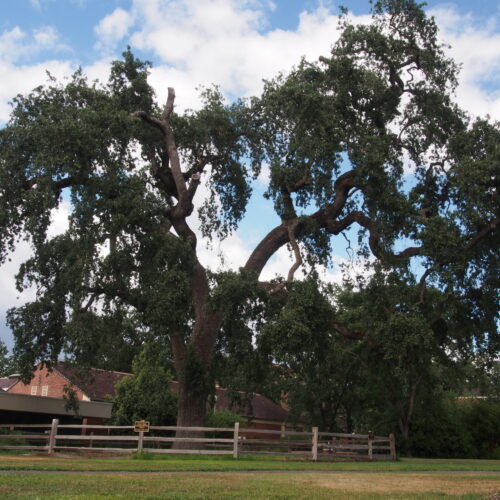
Valley Oak
Quercus lobata -
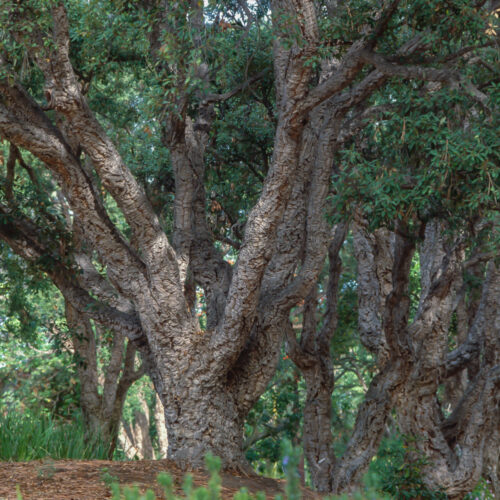
Cork Oak
Quercus suber -
California Native
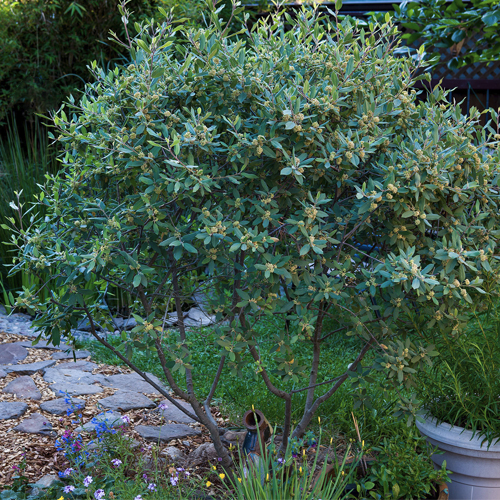
Coffeeberry
Rhamnus [Frangula] californica -
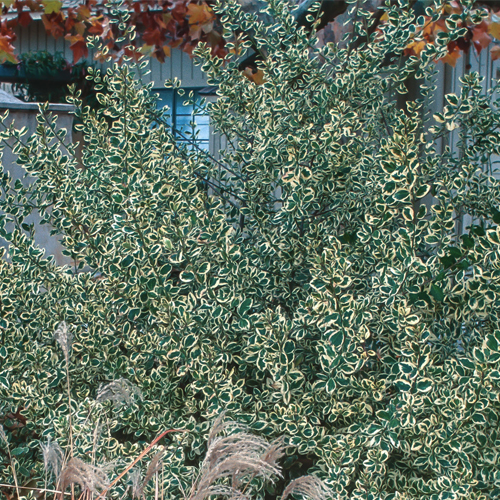
Italian Buckthorn
Rhamnus alaternus -
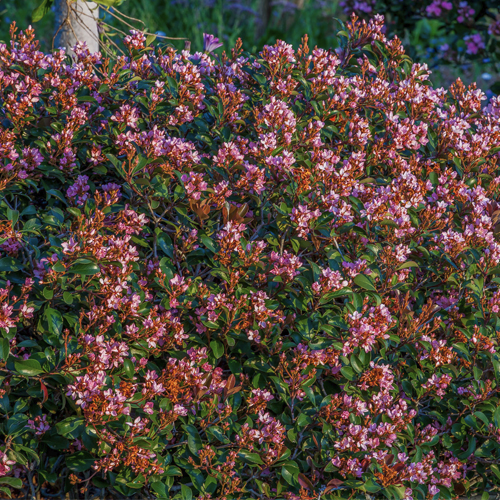
Indian Hawthorn
Rhaphiolepis spp -
California Native
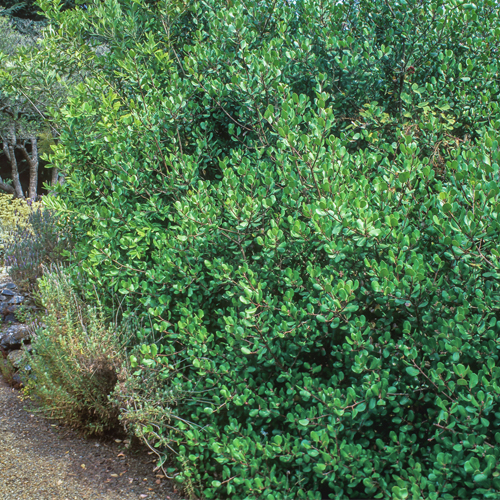
Lemonade Berry, Sugar Bush
Rhus spp -
California Native
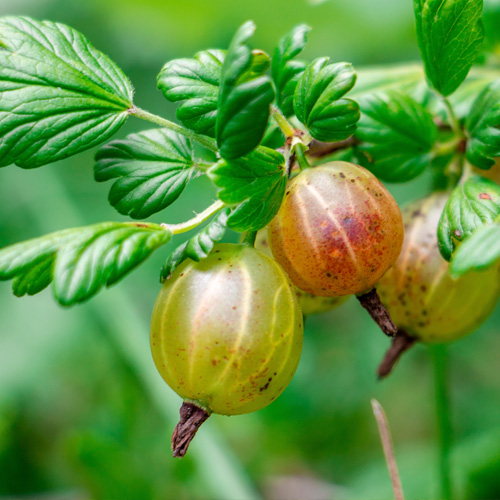
Currant, Gooseberry
Ribes spp -
California Native
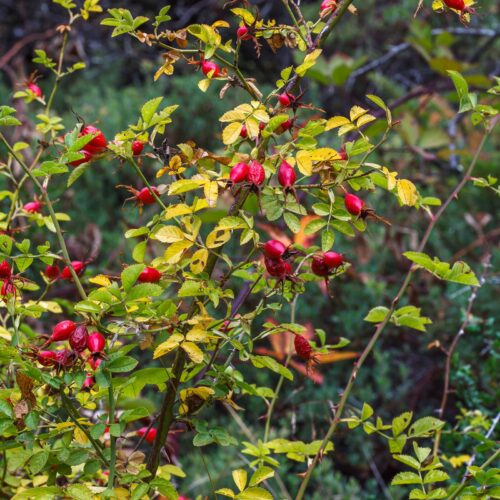
California Wild Rose
Rosa californica -
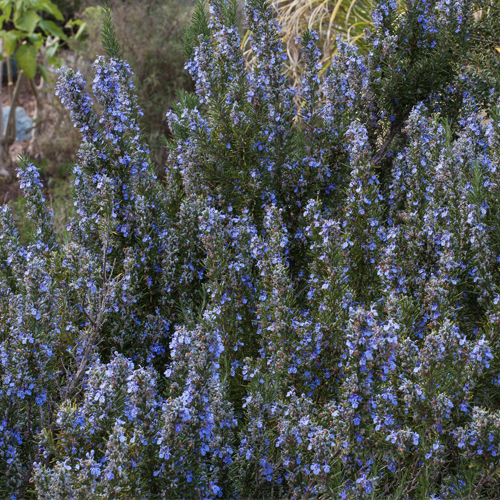
Rosemary
Rosmarinus officinalis -
California Native
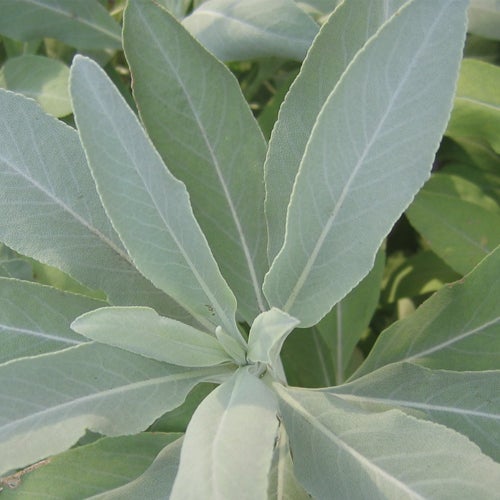
Sage
Salvia spp -
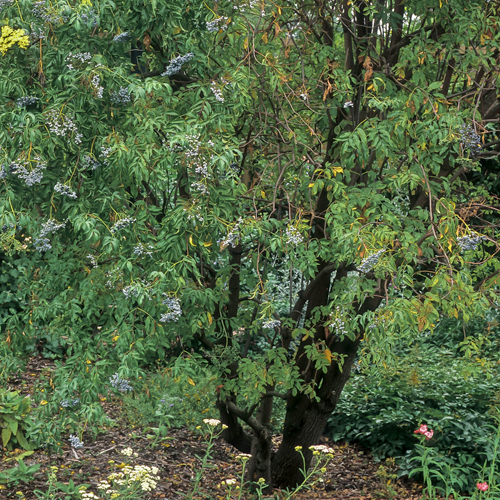
Elderberry
Sambucus spp -
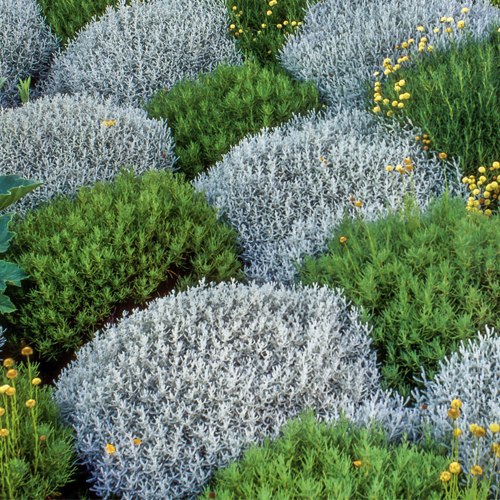
Lavender Cotton
Santolina spp


Valley Oak
Quercus lobata
CA Native, Tree
Care:

Full Sun

Low

Well Drained
Look:

Large
size

Green - Dark
leaves

Brown
bark

Gray
bark
Valley Oak
Quercus lobata
CA Native, Tree
Care:

Full Sun

Low

Well Drained
Look:

Large
size

Green - Dark
leaves

Brown
bark

Gray
bark
Woody perennial, deciduous tree. Fast growing and one of the best local natives for large properties. Dark green leaves and dark brown to pale gray, ridged bark. Not susceptible to Sudden Oak Death.


Cork Oak
Quercus suber
Tree
Care:

Full Sun

Low

Well Drained
Look:

Large
size

Medium
size

Green - Dark
leaves

Gray
bark
Cork Oak
Quercus suber
Tree
Care:

Full Sun

Low

Well Drained
Look:

Large
size

Medium
size

Green - Dark
leaves

Gray
bark
Quercus suber is an evergreen tree with unique bark characteristics. The bark contains high amounts of suberin, which is a waxy substance that is waterproof. With that, the bark has been used to produce corks for wine bottles for years. The trees’ average growth is around 40-70 feet tall and wide. They can grow bigger, but it’s not very common.


Coffeeberry
Rhamnus [Frangula] californica
CA Native, Shrub
Care:

Full Sun

Partial Shade

Low

Most Soils
Look:

Large
size

Medium
size

Green - Dark
leaves
Coffeeberry
Rhamnus [Frangula] californica
CA Native, Shrub
Care:

Full Sun

Partial Shade

Low

Most Soils
Look:

Large
size

Medium
size

Green - Dark
leaves
Evergreen shrub that has insignificant flowers followed by black berries. Flowers are attractive to pollinators, especially bees, and berries provide a food source for birds. Cultivars commonly sold in nurseries have differing growth habits and are often smaller than the species which grows 5-18’ x 10-18’.
Examples: F. c. ‘Eve Case’ (6-8’ x 6-8’), R. c. ‘Leatherleaf’ (5-6’ x 5-6’), R. c. ‘Mound San Bruno’ (6-8’ x 6-8’) with a dense, mounding growth habit.
Note: California coffeeberry was formerly classified as Rhamnus californica and is now classified as Frangula californica.


Italian Buckthorn
Rhamnus alaternus
Shrub
Care:

Full Sun

Partial Shade

Low

Most Soils
Look:

Green - Dark
leaves
Italian Buckthorn
Rhamnus alaternus
Shrub
Care:

Full Sun

Partial Shade

Low

Most Soils
Look:

Green - Dark
leaves
Group of shrubs typically grown for their foliage as background plantings, hedges, or screens. Italian buckthorn (Rhamnus alaternus)—a large, evergreen shrub that grows 12-15’ tall and wide from the Mediterranean region—is the most widely available of the buckthorns. Italian buckthorn is adapted to coastal and inland environments and tolerates clipping and pruning well. R. a. ‘Variegata’ has leaves with cream edges.


Indian Hawthorn
Rhaphiolepis spp
Shrub, Tree, Vine
Care:

Full Sun

Partial Shade

Low

Well Drained
Look:

Green
leaves

Pink
flowers
Indian Hawthorn
Rhaphiolepis spp
Shrub, Tree, Vine
Care:

Full Sun

Partial Shade

Low

Well Drained
Look:

Green
leaves

Pink
flowers
Two species of Rhaphiolepis and many cultivars are widely available in California. These evergreen, flowering shrubs and small trees provide attractive foliage and clusters of pink or white flowers from spring into fall followed by dark blue fruits.
- Indian hawthorn (R. indica, 4-5’ x 5-6’) has a mounding growth habit and is available in many cultivars at local nurseries offering a range of size and flower variations.
- i. ‘Majestic Beauty’ (R. montic 10-18’ x 8-10’) deserves special mention as it is larger than other available cultivars and can be trained as a small, single- or multi-trunked tree.
- Yeddo hawthorn (R. umbellata, 4-8’ x 4-8’) has white flowers and more leathery leaves than Indian hawthorn.


Lemonade Berry, Sugar Bush
Rhus spp
CA Native, Shrub, Tree
Care:

Full Sun

Partial Shade

Low

Well Drained
Look:

Medium
size

Green
leaves

Pink
flowers

White
flowers
Lemonade Berry, Sugar Bush
Rhus spp
CA Native, Shrub, Tree
Care:

Full Sun

Partial Shade

Low

Well Drained
Look:

Medium
size

Green
leaves

Pink
flowers

White
flowers
Diverse group of resilient shrubs and trees, including several that are native to California, that provide form, foliage, and habitat value.
- Lemonade berry (R. integrifolia, 4-20‘ x 4-20’) is native to coastal Southern California and Baja California. This evergreen shrub provides white-to-pink clusters of flowers in late winter and early spring followed by sticky, reddish fruits. Lemonade berry is more suitable for coastal climates, whereas sugar bush will also grow in hotter areas.
- Sugar bush (R. ovata, 4-10’ x 4-10’) is native to dry slopes away from the coast in Southern California and Baja California. Similar to lemonade berry with more reddish flowers and leaves that are often folded down the center.
- African sumac (R. lancea, 15-25’ x 20-30’) is an evergreen tree from South Africa with willow-like leaves and graceful weeping habit.
Note: The infamous poison oak was previously classified within the Rhus genus, but has since been reclassified to the more appropriate sounding Toxicodendron diversilobum.


Currant, Gooseberry
Ribes spp
CA Native, Shrub
Care:

Full Sun

Partial Shade

Shade

Very Low

Low

Well Drained
Look:

Large
size

Medium
size

Green - Dark
leaves

Pink
flowers

Red
flowers

White
flowers

Brown
bark
Currant, Gooseberry
Ribes spp
CA Native, Shrub
Care:

Full Sun

Partial Shade

Shade

Very Low

Low

Well Drained
Look:

Large
size

Medium
size

Green - Dark
leaves

Pink
flowers

Red
flowers

White
flowers

Brown
bark
Currants (without spines) and gooseberries (with spines) are grown for their graceful growth habit, attractive foliage, wonderful displays of pendulous flowers in winter-spring that are attractive to hummingbirds, and colorful fruit that provides a food source for birds. Most of the species listed are deciduous, going dormant in the summer months.
Examples: Some of the species suitable for California gardens, preferably with partial shade, are native to the Western United States:
- aurem, golden currant (5-10’ x 3-6’), deciduous with small clusters of delicate yellow flowers and sprawling habit.
- malvaceum, chaparral currant (4-8’ x 4-6’), deciduous with early clusters of pink flowers, a slightly vase-shaped habit, and more drought-tolerant than most species.
- sanguineum var. glutinosum, pink-flowering currant (5-12’ x 5-12’), deciduous with maple-like leaves, a vase-shaped habit, and long pendulous clusters of pink, reddish, or white flowers in the spring; many available cultivars such as ‘Claremont’, ‘Tranquillon Ridge’, and ‘White Icicle’.
- speciosum, fuchsia-flowered gooseberry (4-8’ x 6-10’), deciduous with spiny, arching stems and bright red fuchsia-like flowers along the stems in the spring that are attractive to hummingbirds.
- viburnifolium, evergreen currant or Catalina perfume (2-4’ x 5-7’), evergreen groundcover that works well under oaks and can provide erosion control to slopes.


California Wild Rose
Rosa californica
CA Native, Shrub
Care:

Full Sun

Partial Shade

Low

Loam
Look:

Green - Dark
leaves

Pink
flowers

Red
flowers

White
flowers
California Wild Rose
Rosa californica
CA Native, Shrub
Care:

Full Sun

Partial Shade

Low

Loam
Look:

Green - Dark
leaves

Pink
flowers

Red
flowers

White
flowers
A native, perennial, deciduous shrub with dark green leaves divided into coarsely toothed leaflets. Rose to pink colored flowers containing yellow seeds and grows abundantly in moist soils. Natural habitat for birds and pollinator insects.


Rosemary
Rosmarinus officinalis
Shrub
Care:

Full Sun

Low

Well Drained
Look:

Green - Dark
leaves

Blue
flowers
Rosemary
Rosmarinus officinalis
Shrub
Care:

Full Sun

Low

Well Drained
Look:

Green - Dark
leaves

Blue
flowers
Classic Mediterranean flowering shrub with aromatic foliage, small blue-lavender flowers in late winter and spring that attract butterflies and bees. Thrives in full sun with well-drained soil and makes a good container plant. Rosemary is an excellent plant to have in the garden for harvesting fresh springs for use in cooking. Cuttings root readily, making it relatively easy to propagate new plants. Many named cultivars provide variation in size, growth form, flavor, and fragrance.
Examples: R. o. ‘Barbeque’ (3-5’ x 2-3’) has tall, upright stems that can be used as skewers for grilling; R. o. ‘Blue Spires’ (4-5’ x 2-3’); R. o. ‘Collingwood Ingram’ (2-3’ x 3-6’) is lower-growing with arching branches; R. o. ‘Huntington Carpet’ (1-2’ x 4-8’) is very low-growing; R. o. ‘Irene’ (1-2’ x 2-3’) has a mounding habit; R. o. ‘Prostratus’ (2’ x 4-8’) has a trailing habit that works well cascading over a retaining wall.


Sage
Salvia spp
CA Native, Ground Cover, Shrub
Care:

Full Sun

Partial Shade

Very Low

Low

Moderate

Well Drained
Look:

Medium
size

Small
size

Gray
leaves

Green
leaves

Lavender
flowers

Pink
flowers

Purple
flowers

White
flowers

Yellow
flowers
Sage
Salvia spp
CA Native, Ground Cover, Shrub
Care:

Full Sun

Partial Shade

Very Low

Low

Moderate

Well Drained
Look:

Medium
size

Small
size

Gray
leaves

Green
leaves

Lavender
flowers

Pink
flowers

Purple
flowers

White
flowers

Yellow
flowers
Salvias are a huge group of more than 900 species that include annuals, perennials, and shrubs adapted to a variety of climates and have varying water requirements. Salvias are attractive to hummingbirds, butterflies, and bees, and are generally ignored by deer. Sages that are native to California are generally drought-tolerant, prefer full sun, and little to no fertilizer. Annual pruning in late summer or fall generally helps to keep plants tidy and healthy.
CA native sages:
- S. apiana, white sage (3-4’ x 4-6’), silvery-white, aromatic leaves with tall flower spikes of white flowers, popular for honey production and in bundles as a natural incense.
- ‘Bee’s Bliss’ (1-2’ x 6-8’), superb, light gray groundcover with light purple flowers on long spikes; damp conditions can cause mildew which will clear with warm weather and sunny conditions.
- S. clevelandii, Cleveland sage (3-5’ x 3-5’), medium-sized shrub for hot, dry locations known for pleasant fragrance and deep blue whorls of flowers; popular cultivars include S. c. ‘Allen Chickering’, S. c. ‘Pozo Blue’, and S. c. ‘Winnifred Gilman’.
- S. leucophylla, purple sage, includes plants with both an upright growth habit, such as S. l. ‘Amethyst Bluff’ (3-5’ x 3-5’) and others with a sprawling form, such as S. l. ‘Point Sal’ (2-3’ x 6’), both of which are from Santa Barbara county.
- S. sonomaensis, Sonoma sage (1-2’ x 3-4’), groundcover that prefers light shade and will not tolerate damp conditions; cultivars include S. s. ‘Dara’s Choice’, S. s. ‘Greenberg Gray’, and S. s. ‘Hobbit Toes’.
- S. spathacaea, hummingbird sage (1-2’ spreading), herbaceous groundcover that grows well in dry shade and spreads slowly by underground rhizomes; large leaves have a wonderful fruity fragrance; the only red-flowered native sage.
- S. mellifera, black sage (6′ x 10′), evergreen shrub that grows well in full sun and well drained soils. Dark green leaves with pale purple flowers in late spring and early summer.
Non-native sages:
- S. chamaedryoides, germander sage (2-3’)
- S. chiapensis, Chiapas sage (1-2’ x 3-4’)
- S. greggii, autumn sage (1-4’ x 1-4’)
- S. leucantha, Mexican bush sage (3-4’ x 3-6’)
- S. microphylla, cherry sage (3-4’ x 3-6’)
- S. officinalis, garden sage (1-3’ x 1-3’)


Elderberry
Sambucus spp
Shrub
Care:

Full Sun

Partial Shade

Low

Well Drained
Look:

Green
leaves

White
flowers
Elderberry
Sambucus spp
Shrub
Care:

Full Sun

Partial Shade

Low

Well Drained
Look:

Green
leaves

White
flowers
Fast-growing shrubs and small trees for sun or part shade that attract pollinators from far and wide to large clusters of cream flowers in spring, followed by berries in summer that provide food to many types of birds. Fruit can also be used for culinary purposes. While naturally fairly wild-looking, elderberries can handle being cut back to the ground in the winter or pruned to maintain size and shape.
Examples:
- Blue elderberry (S. mexicana [nigra] spp. caerulea, 8-25’) is native from Oregon to Baja California and beyond.
- Black elderberry (S. nigra, 20-30’) is native to Europe, North Africa, and Asia, and is available in nurseries in the form of many named cultivars. Cut leaf black elderberry (S. n. ‘Black Lace’, 8’ x 8’) has intense dark, fine foliage. Cut leaf elderberry (S. n. ‘Laciniata’, 10’ x 10’) has green leaves, and variegated black elderberry (S. n. ‘Marginata’, 6-12’) has variegated leaves.


Lavender Cotton
Santolina spp
Shrub
Care:

Full Sun

Partial Shade

Low

Well Drained
Look:

Medium
size

Gray
leaves

Silver
leaves

Yellow
flowers
Lavender Cotton
Santolina spp
Shrub
Care:

Full Sun

Partial Shade

Low

Well Drained
Look:

Medium
size

Gray
leaves

Silver
leaves

Yellow
flowers
Small, mounding, aromatic Mediterranean shrubs that flower in summer with small yellow, button-like flowers. Prune in spring after flowering to maintain appearance. Two widely available species are lavender cotton (S. chamaecyparissus, 1-2’ x 2-3’) with gray-green foliage, and S. rosmarinifolia (1-2’ x 2-3’) with green foliage that resembles rosemary.